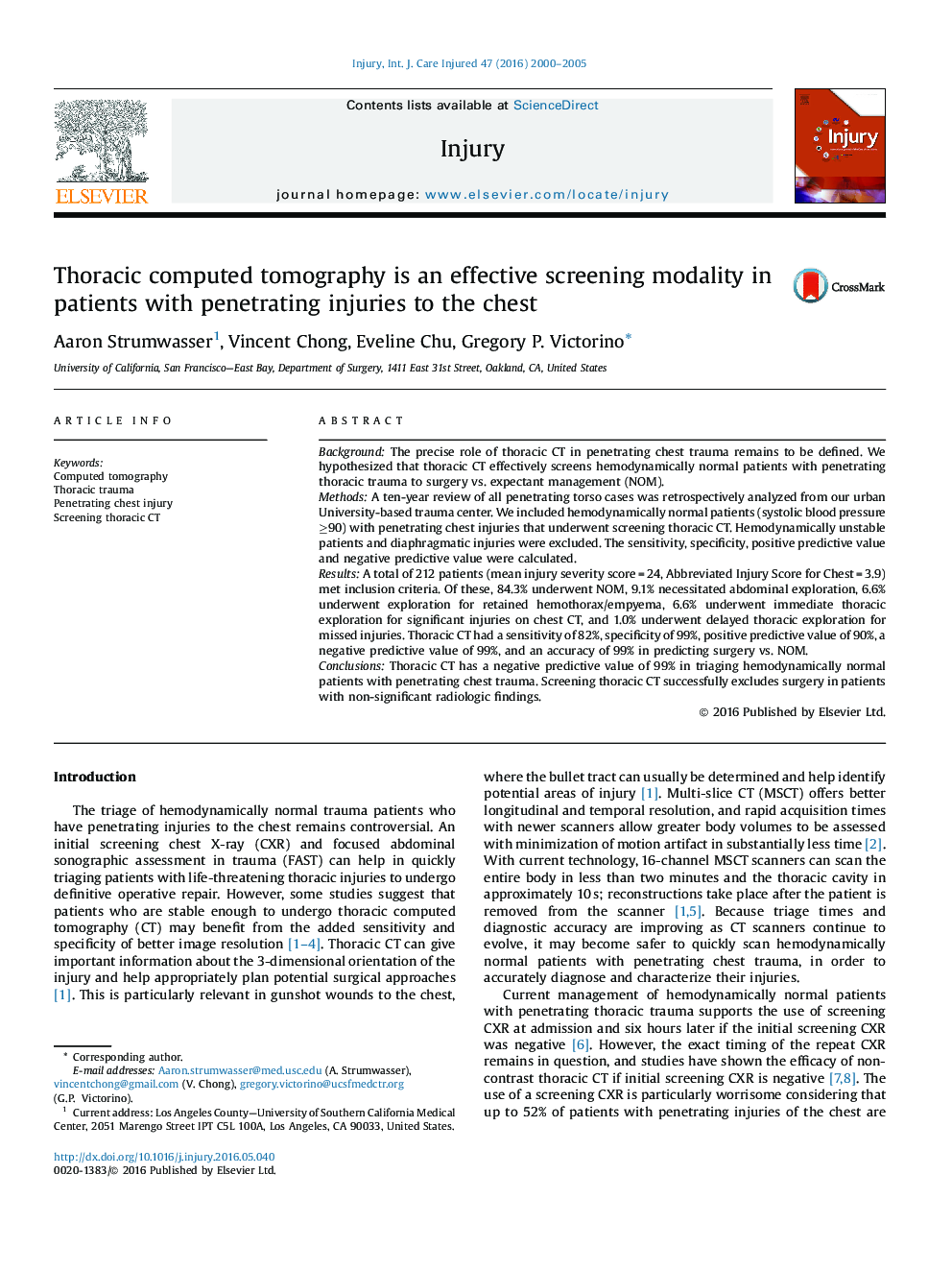| Article ID | Journal | Published Year | Pages | File Type |
|---|---|---|---|---|
| 5652994 | Injury | 2005 | 6 Pages |
BackgroundThe precise role of thoracic CT in penetrating chest trauma remains to be defined. We hypothesized that thoracic CT effectively screens hemodynamically normal patients with penetrating thoracic trauma to surgery vs. expectant management (NOM).MethodsA ten-year review of all penetrating torso cases was retrospectively analyzed from our urban University-based trauma center. We included hemodynamically normal patients (systolic blood pressure â¥90) with penetrating chest injuries that underwent screening thoracic CT. Hemodynamically unstable patients and diaphragmatic injuries were excluded. The sensitivity, specificity, positive predictive value and negative predictive value were calculated.ResultsA total of 212 patients (mean injury severity score = 24, Abbreviated Injury Score for Chest = 3.9) met inclusion criteria. Of these, 84.3% underwent NOM, 9.1% necessitated abdominal exploration, 6.6% underwent exploration for retained hemothorax/empyema, 6.6% underwent immediate thoracic exploration for significant injuries on chest CT, and 1.0% underwent delayed thoracic exploration for missed injuries. Thoracic CT had a sensitivity of 82%, specificity of 99%, positive predictive value of 90%, a negative predictive value of 99%, and an accuracy of 99% in predicting surgery vs. NOM.ConclusionsThoracic CT has a negative predictive value of 99% in triaging hemodynamically normal patients with penetrating chest trauma. Screening thoracic CT successfully excludes surgery in patients with non-significant radiologic findings.
